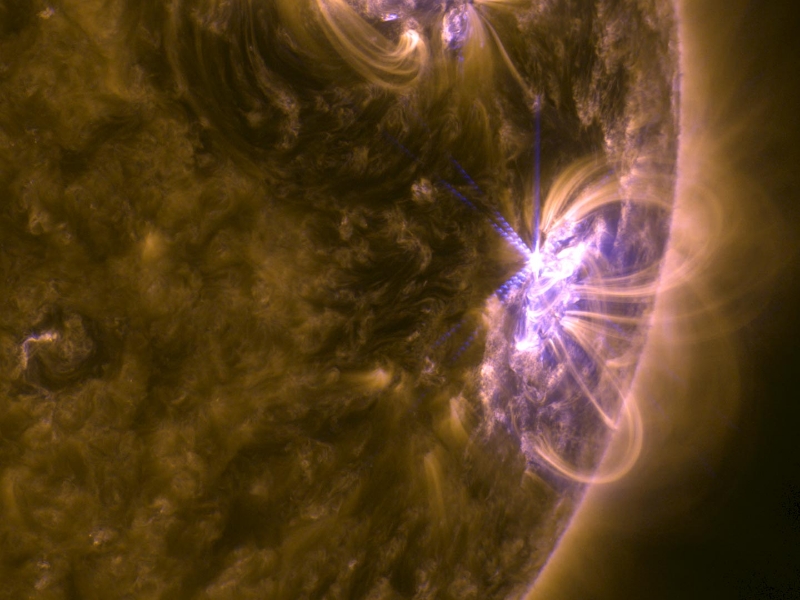A question for Lucia Kleint
Are there solar quakes?
Astronomer Lucia Kleint explains what we know about the sunquakes discovered in 1998 and the mysteries that continue to fascinate scientists.

The sun is a giant ball of gas with temperatures ranging from a few thousand to millions of degrees. Occasionally, there are solar flares that can cause northern lights on Earth, changes in satellite orbits or blackouts. However, these eruptions also affect the sun itself: They change the atmosphere of the sun and occasionally also cause solar quakes. The solar quakes, discovered only in 1998, look like waves spreading out in circles on the surface – similar to the view of throwing a rock into a lake.
Much less is known about solar quakes than about earthquakes, it is not even known whether they are triggered above or below the surface. They have a few dozen times more energy than the largest earthquakes ever observed and move up to 20 times faster. To this day, it remains a mystery why they only occur during certain solar flares.
About the person

Lucia Kleint
is a professor at the Astronomical Institute, heads the Space-Weather Group and is vice director of the observatory of the University of Bern in Zimmerwald. She is interested in the physics of the sun, astronomical instrumentation and machine learning and combines these areas to investigate solar flares.
Subscribe to the uniAKTUELL newsletter

Discover stories about the research at the University of Bern and the people behind it.